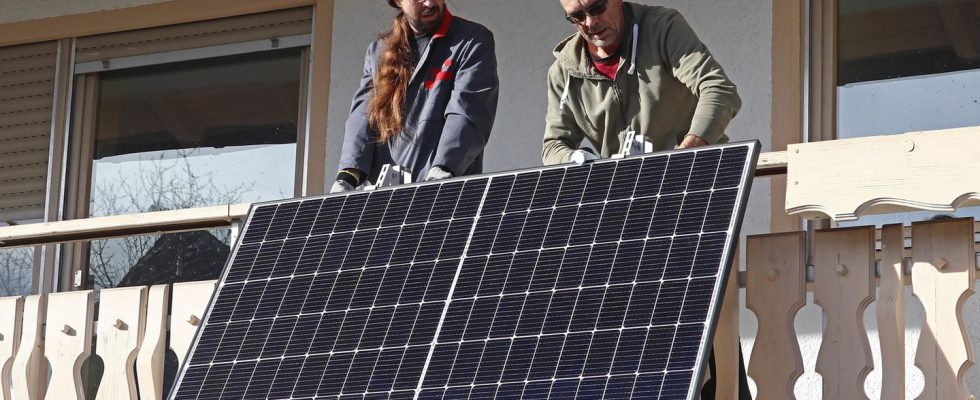Balcony power plants are a good way to reduce energy bills: The mini solar systems convert solar energy into electricity and feed it into the home network. How does this work even in low light conditions in winter?
Late sunrise, rainy weather, early sunset – winter doesn’t exactly offer the best weather conditions for producing your own electricity with a mini solar system. Sunlight is in short supply in the gray winter months. However, you can counteract this with a trick.
Balcony power plant in winter: This is how you get the greatest possible yield
In order to get the greatest possible energy yield from solar energy in weak light, the area of the solar panels should be as large as possible – and work with the highest possible wattage. The mini power plant then absorbs more light and can therefore convert more energy.
Unauthorized amounts of energy do not flow into the power grid because the inverter throttles the power fed in anyway to the permitted upper limit of 600 watts (W). It will be increased from 2024, when it will be allowed to feed 800 W into the power grid. It is therefore worth buying a balcony power plant whose inverter can then be easily upgraded.
In concrete terms, this means: A balcony power plant can easily produce more than 600 or 800 W maximum output. The higher the power, the greater the energy and power output in low light.
Mini solar system for the winter: model from Pianeta with 1,640 watts
The Pianeta power plant comes with four solar modules of 410 W each – so it delivers a total output of 1,640 W. This high capacity gets a lot of energy out of even weak sunlight. This mini solar system is therefore also suitable for places with poor lighting conditions and can, for example, be mounted on balconies with an east or west orientation.
- Solar modules: four times 410 W JA-Solar, monocrystalline solar cells, 21 kilograms each
- Inverter: 600W/800W Hoymiles HM-1500
- Cable: five meters
- Functions: WiFi and app
- Scope of delivery: four solar modules, inverter, Schuko socket cable, Hoymiles Wlite DTU
Here you go to offer on Amazon
Practical: The inverter currently throttles the power fed in to 600 W, but can be upgraded to 800 W from 2024.
DUR-line balcony power plant with 1,140 W: Lots of energy even in winter
An alternative to the Pianeta model is the balcony power plant from DUR-line. Here, two large modules deliver a total of 1,140 W of power, which is throttled to 600 or 800 W via an inverter. These two solar panels even work bifacially: This means that cells on the back can also absorb the sun’s rays that are reflected from a house wall or the floor, for example.
- Solar modules: two 570 W, bifacial solar cells, 31.5 kilograms each
- Inverter: 600W/800W from APSystems
- Cable: 20 meters
- Functions: WiFi, Bluetooth and app
- Scope of delivery: two solar modules, inverter, Schuko socket cable
Here you go to offer on Amazon
Practical: With this model, the inverter can also be connected to the app via WLAN or Bluetooth and upgraded. The app also provides an overview of the electricity generated and consumed.
Balcony power plant in winter: These aspects are also important
In addition to the high wattage, other factors play a crucial role in maximizing the electricity yield in bad weather conditions:
In winter the sun has a lower angle of inclination than in summer. It may be worthwhile to adjust the installation angle of the solar panels so that the sun’s rays hit the panels as vertically as possible. The optimal angle here is around 30 to 40 degrees, but depends on the location and orientation of the balcony power plant.
Wet leaves, dirt and snow obscure the solar panels, reducing the area that absorbs sunlight. It is therefore important to clean the solar panels regularly in autumn and winter.
An external power storage unit collects the energy when it is not being actively used. For example, anyone who works outside the home during the day does not feed unused electricity into the grid during that time, but rather uses it as effectively as possible.
If you take all of these points into account, you can get a lot of energy from a balcony power plant even when the winter sun is weak.
This article contains so-called affiliate links. Further information are available here.

